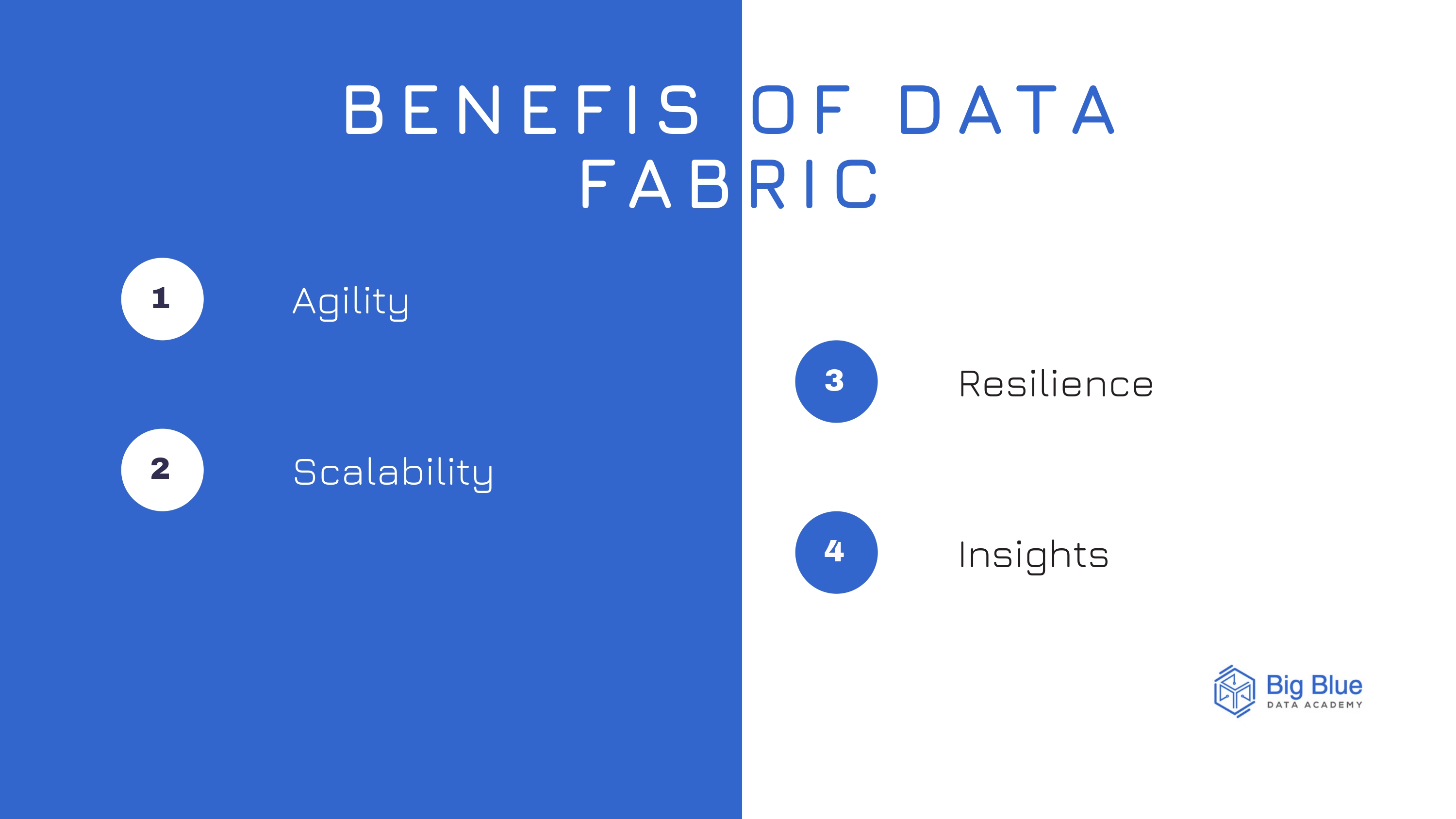Understanding Data Fabric
Data Fabric represents a revolutionary approach to data management, offering organizations a unified solution to seamlessly integrate diverse data sources and formats.
So, let's explore together:
-the key components of Data Fabric
-the benefits of Data Fabric
What is Data Fabric?
Data Fabric is a unified data management system designed to seamlessly integrate different data sources and data formats within an organization.
This framework facilitates the smooth flow of data, the synchronization of various processing tasks, and the implementation of governance policies to ensure data integrity and security.
The goal of the Data Fabric is to enable businesses to fully leverage their data, driving innovation, agility and competitiveness in the digital world.
Components of Data Fabric
Data Fabric comprises several key components, each playing a vital role in its functionality:
.jpg)
Data Integration:
It's the cornerstone of modern data management, serving as the linchpin that enables organizations to harmonize diverse data sources, formats, and systems into a unified and coherent structure.
By facilitating seamless data flow across the enterprise, data integration empowers businesses to break down silos, enhance collaboration, and drive informed decision-making.
Through a combination of technologies such as ETL processes, APIs, and data virtualization, organizations can extract, transform, and load data with precision, ensuring its accuracy, consistency, and reliability.
Ultimately, effective data integration empowers organizations to unlock the full potential of their data assets, driving innovation, efficiency, and competitive advantage in today's data-driven world.
Data Orchestration:
Data orchestration serves as the conductor of data movement, transformation, and processing tasks across distributed infrastructure.
By efficiently coordinating these operations, it ensures seamless data flow regardless of system complexities.
This coordinated process allows businesses to benefit from the value of their data with absolute reliability and efficiency.
Data Governance:
Data governance establishes policies, standards, and controls to safeguard data integrity, security, and compliance.
By implementing these measures, organizations ensure that data is handled responsibly, protecting against breaches and maintaining regulatory adherence.
Effective data governance not only enhances trust in data quality but also supports strategic decision-making and fosters organizational accountability.
Data Intelligence:
Data intelligence leverages cutting-edge analytics and AI technologies to unlock the potential of data, offering deep insights that fuel strategic decision-making.
By employing sophisticated algorithms and machine learning models, organizations can uncover hidden patterns, trends, and correlations within their data, enabling them to make data-driven decisions with confidence.
This holistic approach to data analysis not only enhances operational efficiency, but also enables organizations to innovate and optimize their processes.
Data Services:
Data services provide essential functionalities like data cataloging, lineage tracking, and self-service provisioning.
These capabilities empower users and applications by centralizing data inventory, ensuring transparency in data usage, and enabling autonomous access to data resources.
Benefits of Data Fabric
Implementing a Data Fabric approach yields a plethora of benefits for organizations:
Agility:
This attribute refers to the ability of the Data Fabric framework to enable organizations to swiftly adapt to changing business requirements and market dynamics.
In practical terms, this means that organizations can respond rapidly to new opportunities or challenges, adjusting their strategies and operations as needed to stay competitive and meet evolving demands.
Scalability:
Scalability refers to the Data Fabric's capability to handle increasing data volumes and accommodate evolving infrastructure needs without significant disruption or degradation in performance.
This attribute ensures that as data grows, the system can effectively manage and process it, allowing organizations to scale their operations without encountering limitations.
Resilience:
Resilience pertains to the Data Fabric's ability to maintain data availability, reliability, and disaster recovery capabilities, even in the face of disruptions or failures.
A resilient Data Fabric ensures that organizations can continue to access and leverage their data assets, minimizing downtime and mitigating risks associated with data loss or system failures.
Insights:
Lastly, insights refer to the Data Fabric's capability to unlock actionable insights and intelligence from data.
By analyzing data effectively, the Data Fabric empowers organizations to make informed decisions, drive strategic initiatives, and derive value from their data assets, ultimately leading to improved performance and competitive advantage.
Finally…
In embracing Data Fabric, organizations unlock the true potential of their data, driving innovation, agility, and competitive strength in the digital realm.
Want to learn more about data analytics topics?
Follow us for more educational articles!


.jpg)